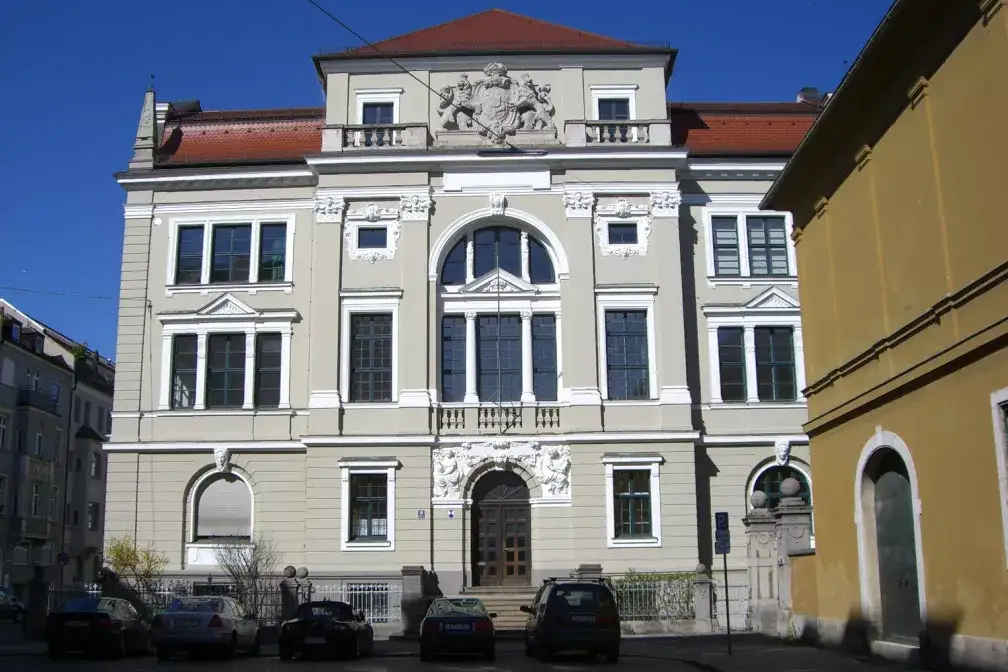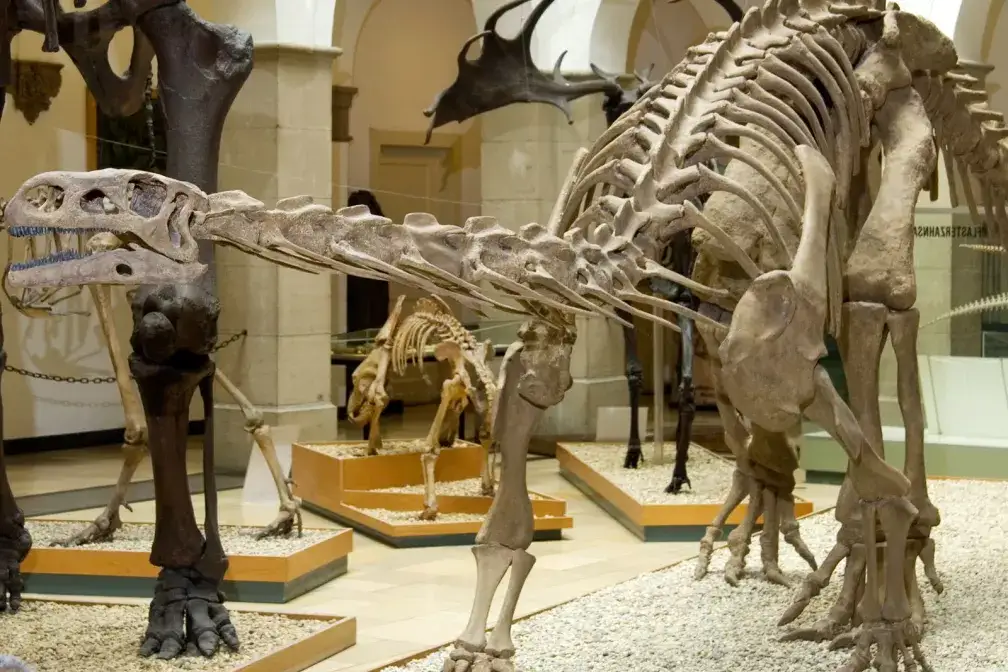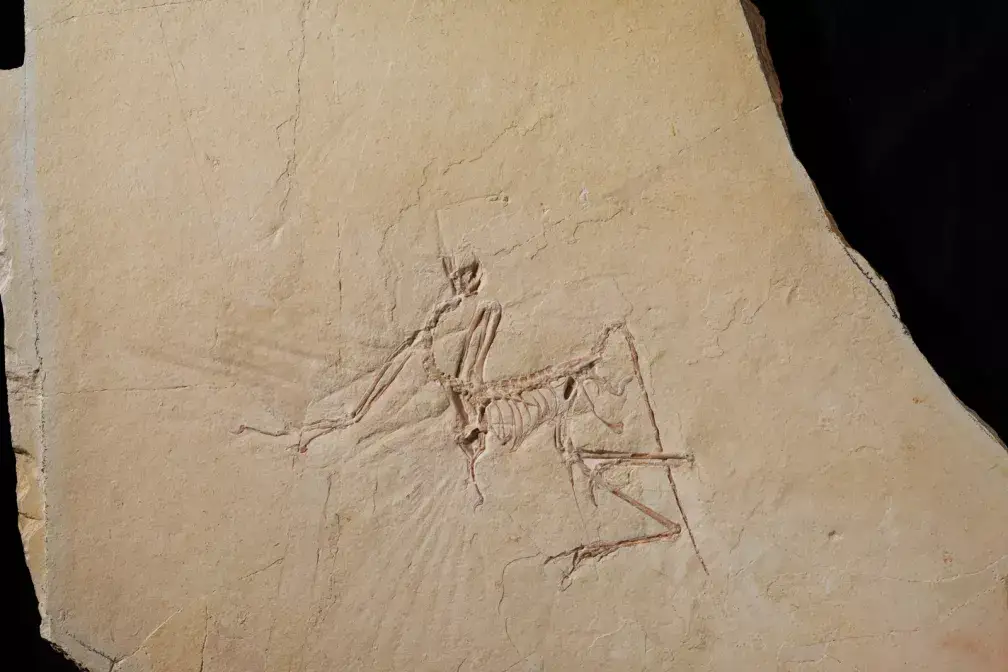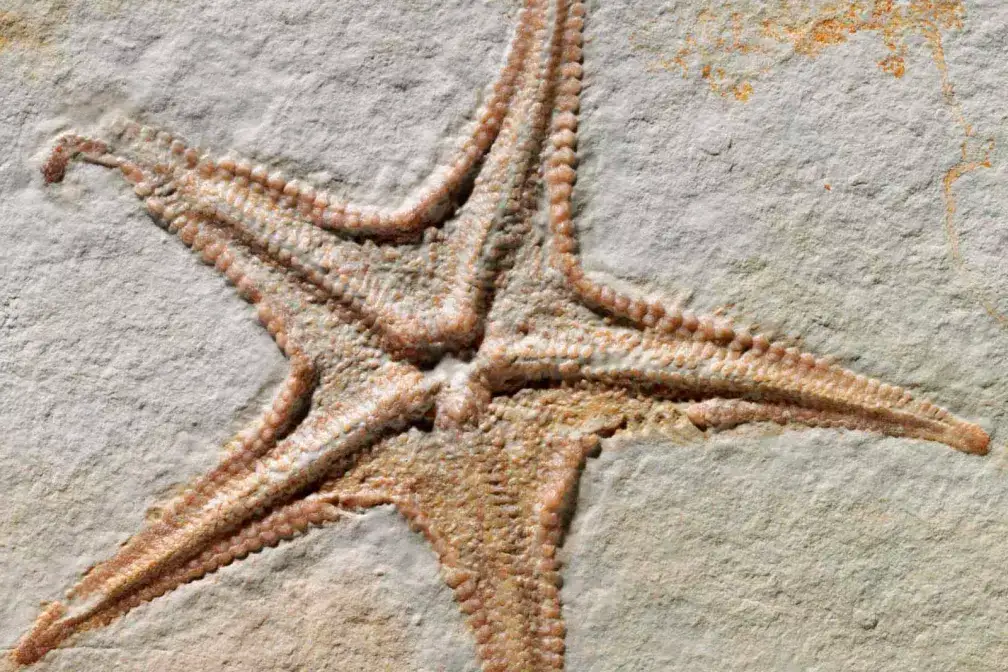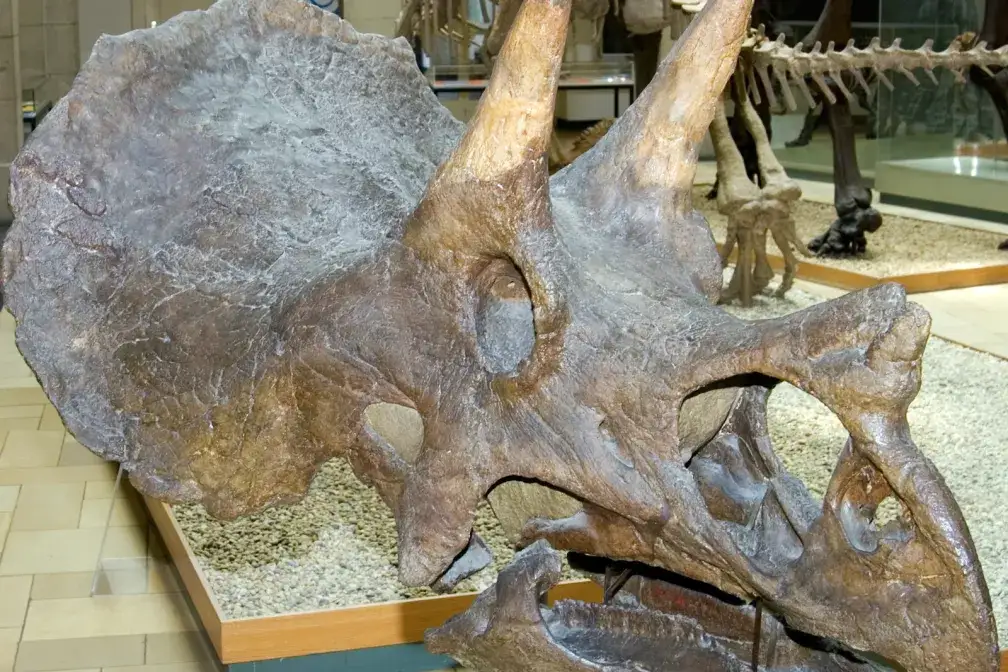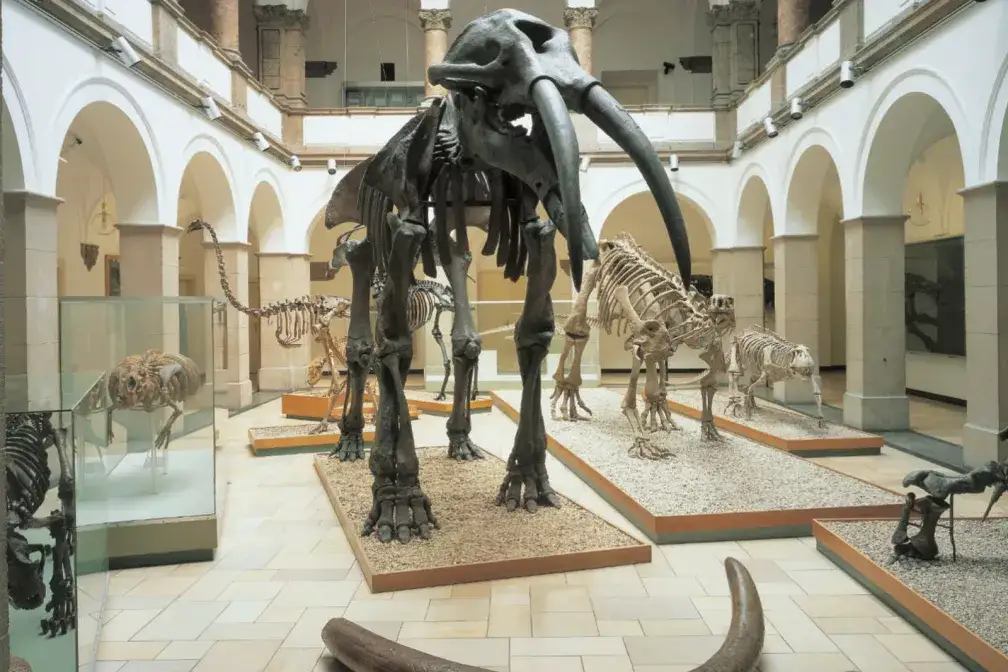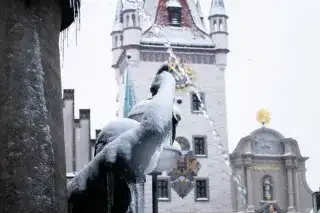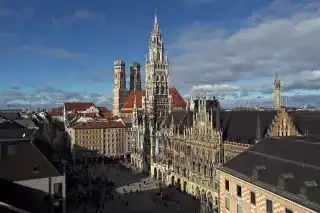Paleontological Museum - a fascinating journey back to prehistoric times
Palaeontological Museum: Current exhibitions and tips
Dinosaurs in the middle of the city! Remains of long-extinct animal and plant species can be admired in the Paleontological Museum Munich. Here you can find information about the museum and its exhibits.
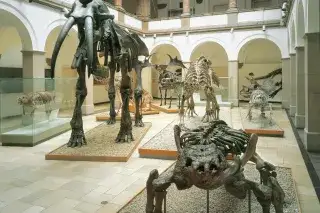
More actions
Why the Paleontological Museum is worth a visit:
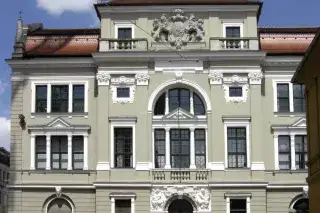
Dive into the fascinating world of prehistoric skeletons and fossils free of charge:
What to see? The Paleontological Museum shows the history of the development of the earth and life and presents fossils of animals and plants from 3.5 billion years of evolution. Many impressive skeletons of vertebrates are on display here: The Gomphotherium, the largest dinosaur in Bavaria, the skull of a three-horned dinosaur, flying reptiles, prehistoric fish and a giant deer.
What i's special? The exhibition is closely linked to the work of the Bavarian Natural History Collections and the Department of Paleontology and Geobiology at the University of Munich (LMU). During a visit, you will always be a the pulse of research.
Paleontological Museum: The most important information at a glance
- Location: On Königsplatz in the Kunstareal right next to the Geological Museum
- Museum category: Nature
- Children's program: family tours, family Sundays with exciting puzzle activities (1x per month)
- Recommended duration of visit: 45 to 90 minutes
- Directions: Underground U2 and bus lines 58, 68 and 100 to "Königsplatz".
- Parking: No parking spaces available
Exhibitions on the history of the earth, evolution and fossils
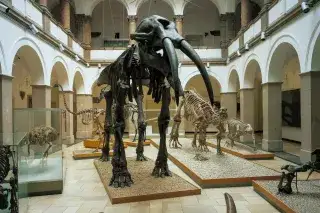
The Paleontological Museum is a museum that forms part of the Bavarian Natural History Collections. Today, it is located in a magnificent historical building. It is dedicated to the evolutionary history of the earth and life and displays fossils from all eras of the earth's history, from the earliest beginnings over three billion years ago to the present day.
You can witness skeletons and other remains of long-extinct animal and plant species. The highlights include:
- The prehistoric bird Archaeopteryx: It might be the most famous fossil in the world. Its skeleton combines features of both birds and dinosaurs. As a transitional fossil, it serves as evidence for Darwin's theory of evolution. Birds are the direct descendants of dinosaurs, actually they can be described as living dinosaurs. The Paleontological Museum exhibits the "Munich specimen" of the Bavarian prehistoric bird, of which a total of 13 skeletons are known.
- The largest Bavarian dinosaur: Plateosaurus, the largest dinosaur ever found in Bavaria, was one of the first large herbivores among the dinosaurs around 210 million years ago. Its descendants, the sauropods, developed into true giants in the Jurassic and Cretaceous periods, weighing over 70 tons and measuring up to 40 m in length.
- The Mühldorfer Urelefant: The prehistoric elephant "Gomphotherium von Gweng" is the highlight of the museum. The impressive skeleton of the prehistoric animal was recovered from the bed of the River Inn in 1971 and is one of the most remarkable fossil finds in the world. The original skeleton consists of 170 preserved individual bones and is kept in the stacks of the Bavarian Natural History Collections. The copy of the skeleton in the atrium of the Paleontological Museum has been the majestic centerpiece of the exhibition for over 40 years.
Guided tours, events, children's program and digital offers
- Let scientists from the Bavarian Natural History Collections guide you through the museum. Curator-guided tours usually take place on open Sundays at 11:30 a.m. and 2:30 p.m. or can be booked via the secretary's office. The Museum Education Center (MPZ) offers child-friendly tours for nurseries and schools.
- On open Sundays, young museum visitors can take part in the children's quiz and collect prizes.
- Digital offers include virtual tours and exhibitions, e.g. on the skeletons in the atrium, the fossil of the month and current special exhibitions.
Fossil of the month

From marine bristle worms to ammonites and bird skeletons: every month a special fossil from the State Collection's collection is exhibited. Scientists from the Bavarian Natural History Collections explain the fossil of the month in detail in accompanying texts and a leaflet.
Descriptions of the individual fossils can be found on the website of the Paleontological Museum.
Free admission
- The entire exhibition can be visited free of charge.
Accessibility and services for people with disabilities
Unfortunately, the Paleontological Museum Munich is not barrier-free.
History of the Paleontological Museum
The beginnings of today's Bavarian Natural History Collections go back to the natural history collection of the "Churbaierische" Academy of Sciences, which was founded in 1759. In 1843, the paleontological collection became independent with the nomination of Johann Andreas Wagner as curator. At that time, the museum was still located in the Alte Akademie on Neuhauser Straße and was officially named the "Palaeontological Museum".
Under Karl Alfred von Zittel, Munich's palaeontology gained a worldwide reputation at the end of the 19th century. In 1944, the Alte Akademie was destroyed by bombings. Along with the building, a large part of the collection and all the exhibits of the Palaeontological Museum were destroyed.
After the end of the war, the Palaeontological Collection and the university institute moved into the building at Richard-Wagner-Straße 10, the former Royal Bavarian School of Arts and Crafts.
The collections soon regained their international reputation thanks to extensive growth. Since the 1960s, the Palaeontological Museum has been able to display an impressive collection again. Today, the museum presents itself as a research museum for palaeontology and geobiology in Munich with attractive permanent and special exhibitions on the development of life on earth.
In cooperation with the cultural department and the museums
This article about Munich's museums is sponsored by the Cultural Department of the City of Munich and was conceived in cooperation with the State Agency for Non-State Museums in Bavaria. The content has been coordinated between the participating museums and muenchen.de, the official city portal.
At a glance
Paleontological Museum
Richard-Wagner-Str. 10
80333
München
Tel:
+498921806630

